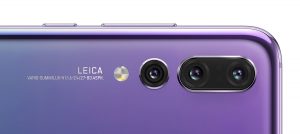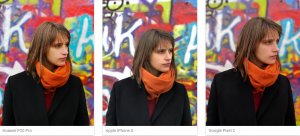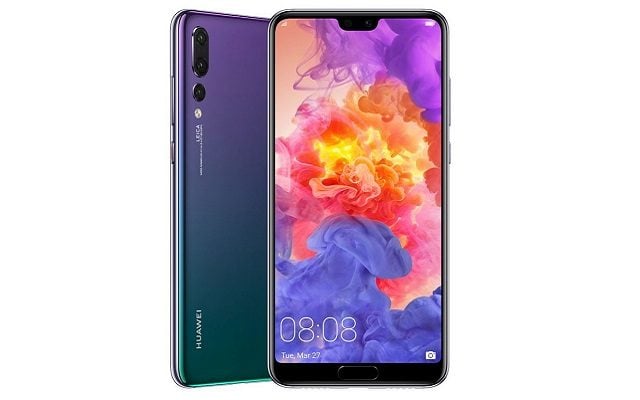HUAWEI P20 Pro Camera Review: Innovative Technologies, Outstanding Results
The HUAWEI P20 Pro is the latest flagship smartphone by Huawei, and in terms of camera tech, is arguably the most innovative device we’ve seen in quite some time. A quick look at the device’s back plate reveals that the P20 Pro is the first smartphone to feature a triple camera setup. However, Huawei hasn’t simply slapped a third sensor and lens onto its current dual-camera system.
HUAWEI P20 Pro Camera Review
The new model stands out among its peers in several ways:
- At 1/1.78″, the main camera’s sensor is unusually large—approximately twice the size of the Samsung Galaxy S9’s 1/2.55″ chip. Despite a slightly slower f/1.8-aperturelens, the RGB main camera sensor of the P20 Pro captures approximately 20 percent more light than the smaller sensors used in most competing models. This sensor is also helped by the B&W sensor which also catches a lot of photons.
- The main camera sensor uses a Quad Bayer structure with a total pixelcount of 40Mp. It outputs data binned in 2 × 2 pixel units, resulting in 10Mp image output.
- With an equivalent focal length of 80mm, the P20 Pro’s optically-stabilized tele-camera offers a significantly longer reach than the 2x tele-modules in the latest iPhone or Samsung Galaxy devices. This is possible because the main camera in combination with the 20Mp monochrome secondary sensor is already capable of delivering decent zoom detail at a 2x zoom factor. As a consequence, the engineers have been able to focus on squeezing a longer reach out of the P20 Pro’s tele-lens. The Tele also outputs 10Mp image.

As with previous high-end Huawei smartphones, the monochrome camera serves several purposes: it helps with depth estimation for the simulated bokeh effect, and the fine detail and low noise levels of the monochrome sensor improve image quality when zooming and in low light.
Key camera specifications:
- Triple camera setup
- Main camera: 40Mp, 1/1.73″ RGB sensor with Quad Bayer structure, f/1.8-aperture lens with 27mm equivalent focal length
- Secondary camera: 20Mp, 1/2.78″ monochrome sensor, f/1.6-aperture lens with 27mm equivalent focal length
- Tele-camera: 8Mp, 1/4.4″ RGB sensor, f/2.4-aperture lens with 80mm equivalent focal length, and optical image stabilization
- Aperture mode default eq. focal length: 55mm
- PDAFon main sensor
- 4K video (not default mode)
- 960 fps slow-motion video at 720p
- 1″ display, 2240 x 1080 resolution
- Kirin 970 chipset
Test summary
With an overall score of 109 points, the Huawei P20 Pro sets a new benchmark for smartphone cameras on DxOMark.com, outscoring all of its closest rivals, such as the Apple iPhone X, the Google Pixel 2, and the Samsung Galaxy S9 Plus by a margin that is close to or higher than 10 points. Much of this is due to the Huawei’s outstanding still image capabilities that earn it an unprecedented Photo score of 114 points. The large sensor in the main camera combined with the B&W sensor allows for excellent low-light performance and class-leading dynamic range; the dedicated 80mm equivalent tele-lens in combination with the high-resolution monochrome chip, delivers the best zoom performance we’ve seen on a smartphone to date. The monochrome chip is also used to help generate the P20 Pro’s excellent bokeh-simulation.

And the P20 Pro is no slouch either in video mode, thanks to class-leading image stabilization, a good autofocus, and very low noise levels. At 98 points, it just manages to push the Google Pixel 2 off the number one spot in the video ranking, making the P20 Pro the best all-around mobile device for imaging that money can currently buy.
Bright light
The Huawei P20 Pro delivers excellent image in all bright-light conditions. Exposure is usually spot-on and the dynamic range is one of the widest we have measured on any smartphone, making the Huawei ideal for shooting in difficult high-contrast situations. Images are sharp across the frame, with pleasant textures and a lot of detail. Noise is very well under control, too, with virtually no grain visible in areas of plain color, such as blue skies.
The P20 Pro’s autofocus system works reliably and swiftly in all situations, and color rendering is generally very pleasant, with only very occasional orange or pink color casts noticeable. We also observed a slight loss of color saturation and some aliasing and halo artifacts in some specific high-contrast scenes.
Low light and Flash
Thanks to an unusually large (by smartphone standards) 1/1.73″ sensor in its main camera, the Huawei P20 Pro delivers class-leading low levels of noise, making it the smartphone of choice for any kind of photo and video shooting in low light and indoor conditions. In the night shot comparison below, you can see that the Huawei sample shows better detail and significantly lower noise levels than the competition from Apple and Google.
In addition, autofocus, auto white balance, and exposure all operate reliably down to very low light levels. It also maintains pleasant color rendering when the light gets dimmer, making the P20 Pro a very easy pick for any low-light smartphone photographer.
Using the LED flash on a smartphone is generally a bad idea, but the Huawei P20 Pro’s is the best flash we have tested on a smartphone, delivering good exposure and detail in a repeatable fashion. Again, noise levels are very low, making flash use a real option on the Huawei.
Zoom and Bokeh
The Huawei P20 Pro comes with a two-pronged approach to zooming. A dedicated stabilized zoom lens with a long 80mm equivalent focal length takes care of the long-reach images, while the main RGB sensor in combination with a secondary high-resolution monochrome chip is capable of delivering good zoom results at medium-range (around a 50-60mm equivalent focal length).
As a result, the Huawei P20 Pro excels in the zoom category, delivering results that are a cut above the rest. The detail in zoom images is unprecedented for smartphones, especially for medium- and long-range shots, and noise levels are low in all light conditions, making the P20 Pro by far your best option if zooming is high up on your list of priorities.

Photo scores explained
With a total photo score of 114, the Huawei P20 Pro is currently the highest-ranked smartphone for still image capture by quite a margin. The overall Photo score is calculated from sub-scores in tests that examine different aspects of its performance under different lighting conditions. In this section, we’ll take a closer look at these image quality sub-scores.
Flash (92)
The LED flash on smartphones is usually best reserved for emergency illumination. However, if you really have to use flash, the Huawei P20 Pro is the best smartphone for that purpose. Flash performance is generally repeatable, and without any ambient illumination, white balance, color rendering and target exposure are all good. Noise is well-controlled, too, and image detail is nicely preserved.
On the downside, some very slight color shading is noticeable in some shots, and occasionally the camera processing does not correct for red-eye effect. When ambient light levels are at 5 Lux, the results are practically identical to the “pure” flash images.
Conclusion: Game changer
We are used to every new smartphone camera generation being slightly better than the previous one, but looking at the images and test results from the P20 Pro, it seems Huawei has skipped one or two generations. The results are simply that good. The P20 Pro’s triple camera setup is the biggest innovation we have seen in mobile imaging for quite some time and is a real game changer.
Being able to pick the best camera for a specific shooting situation and computationally merge the image data from all three sensors means that the new Huawei beats the competition in virtually every category, taking the number one spots in both our Photo and Video rankings. The P20 Pro is particularly good in low light, when zooming, and for bokeh simulation, blowing its direct rivals out of the water. If you are looking for the current best camera in a smartphone, look no further.











No comments